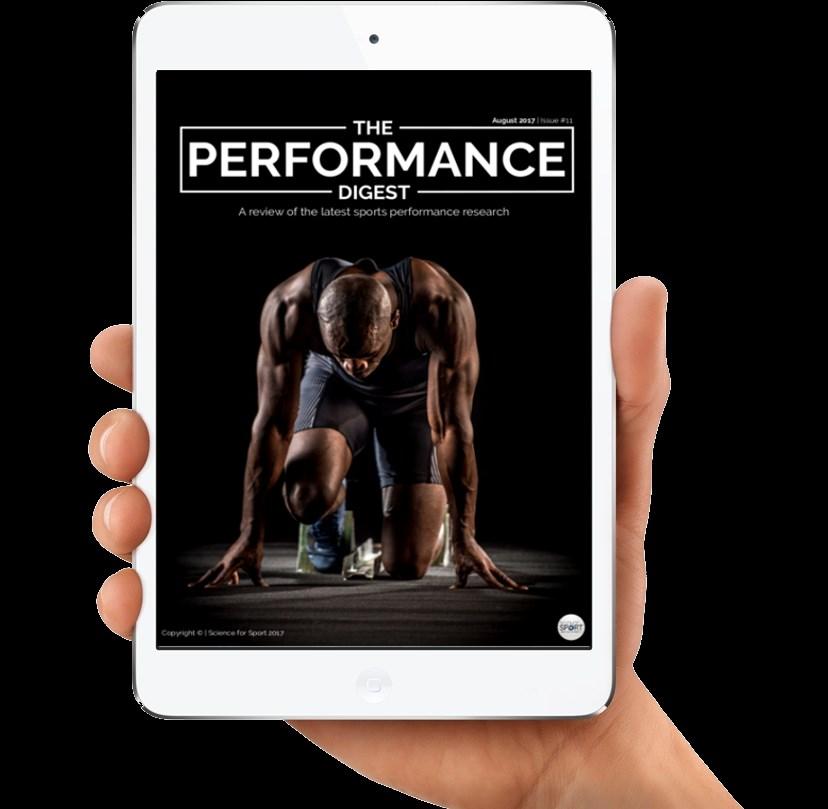

Study Details



Study Details
Practical Takeaways from study

Related links to learn more about the topic
Reviewers comments on the study





Will is a Lecturer of Sport Coaching at Deakin University, Australia. Prior to this he has worked with Cricket NSW and Cricket Australia in an array of roles ranging from a sport scientist, development coach and a strength and conditioning coach. He completed his PhD at the University of Newcastle, Australia within the area of practice design.
Tom is a fitness coach currently working in Premier League football in England. He holds a BSc (Hons) in Sports Science from Liverpool John Moores University and recently completed his PhD titled "An exploration into the assessment of hip extension strength and its importance in professional football".

Cody is a strength and conditioning coach and adjunct lecturer at the University of Iowa. He has an MSE in Exercise Science from the University of Kansas and also holds a CSCS from the NSCA

Tom is the Head of Athletic Development at St Peters RC High School. He holds a Masters in S&C and has previously worked with West Bromwich Albion FC, Gloucester Rugby club, and Great Britain Equine. Tom is our youth research reviewer at Science for Sport.
James is currently the Head Strength & Conditioning Coach for the Romanian Rugby Union. He has previously worked in America's professional rugby competition Major League Rugby with Austin Elite and the NZ Women’s National Rugby League Team. He is a published author and has completed a MSc in Sport & Exercise Science from AUT, Auckland, NZ.

James is a Performance Nutritionist for the English Football Association and works alongside the England national teams (men's and women's). He is also a SENr registered performance nutritionist and holds a PhD from Liverpool John Moores University.




Many athletes’ sporting careers and personal lives are shaped by their involvement in the Olympic Games, whether they are successful or not. Based on what we see on TV or read on various media platforms, we assume that all experiences associated with being an Olympian are positive, both during the lead-in and the Games itself. However, what is rarely spoken of, or seen, is the impact that an Olympic campaign can have on athletes once it is all over.
In this study, the authors investigated the experiences of Olympians following the 2016 Games, with a particular focus on their wellbeing.
Following a post-positivist philosophy (see HERE for an explanation of this), a semiHstructured individual interview was conducted after the 2016 Olympic Ga mes with 18 (female, n 9; male, n 9; mean age 28.33) members of the Australian Olympic team from a variety of sports.
The questions asked during the interviews focussed on:
The athlete’s sporting experiences over their lifetime
Experiences leading into, during, and postOlympic Games
Contributing factors and challenges to their wellbeing in the post-Olympic period
Recommendations for improving the experiences of athletes in the post-Olympic period.
Thematic analysis was used to identify themes, concepts, and quotes to provide insight into the experiences and wellbeing of the athletes during the post-Olympic period.
Performance Appraisal
Athletes displayed positive experiences and coping strategies when their perceived performance expectations were met.
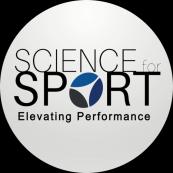
When performance expectations were not achieved (which was the case for most that were interviewed), the athletes were sometimes met with immediate and longterm psychological distress.
Planning for the post-Olympic Period
Having a clear post-Olympic plan (e.g. returning to work, going on holidays, etc.) before heading to the Games was common amongst many athletes and had a mostly positive impact on their long-term wellbeing.
Negative emotions were experienced by those without a clear post-Olympic plan.
Availability of Support
Various resources were utilised by athletes that provided support and encouraged positive wellbeing including, informal coaching debriefs, staying to support teammates, catching up with friends, and connecting with an ex-Olympian mentor.

Athletes felt most supported when their coaches scheduled regular debriefs in the first three months after the Games.
Factors that led to negative wellbeing in the postOlympic period included cessation of a coach’s contract, differences in opinion about the athlete’s performance, and not knowing if funding would be available to continue in the sport.

The first step to ensure athletes have a positive mindset following a large event like this is clearly defining, and agreeing upon, what a successful performance looks like. Getting your athletes to focus on personal performance goals (e.g. achieving a personal best) rather than broader ones (e.g. winning gold) is strongly encouraged.
Coaches need to be aware of and plan for the various challenges that athletes are likely to encounter during the post-Olympic period. Give athletes some choice and allow them to have some ownership of how they want to spend their time after a heavy workload.
The creation of programmes which support athletes during the post-Olympic period is vital for positive mental health. If these programs do not exist or have limited access, coaches may want to consider scheduling formal and informal meetings with their athletes during this period. Based on the findings of the study, a structured approach to debriefing athletes in this period had a positive result on their wellbeing.

"For the general public, the Olympics occur once every four years, over a two-week period. For athletes and their support teams, this is an ongoing process throughout their sporting careers. Unlike the lead-up period, the experiences of athletes after an Olympic Games can differ considerably, ranging from short- to long-term, and positive to negative. "
"The coaches of these athletes have a great responsibility to ensure that before heading off to compete, their athletes are aware of ۱) what it is they are setting out to achieve and ۲) what the process is afterwards. Having a clear plan combined with a means to achieve it is vital for the mental health of the athletes."
One of the most powerful tools that a coach has at their disposal when motivating and improving an athlete’s performance is the ability to provide feedback, whether verbal or visual in nature. Feedback in the form of instant, visual feedback is becoming more commonplace in the sports environment with the accessibility of technology that allows for this (e.g. tablet, smart phones). Encouragement, or what some might refer to as ‘hustle’, is another behaviour often used by coaches to motivate their athletes with some success (see HERE).
In much of the research into this area, the focus has been on the use of feedback in the more technical- or skill-based activities of athletic performance. What is unclear is what the most effective form of feedback during resistance training is. That being the case, the main objective of this study was to examine the impact of various forms of feedback and encouragement on athletes lifting in the gym.
Twelve semiHprofessional rugby union athletes (age = 21.8 ± 0.9 years) completed ۱۰ continuous repetitions of the back squat (75%3RM) whilst subjected to four conditions in a randomised order:
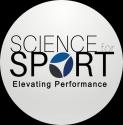
1. Verbal kinematic: Performance-related information was read from an iPad by the lead researcher and passed on to the participant.

2.Visual kinematic: Performance-related information was displayed on an iPad in front of the participant.

3.Verbal encouragement: The lead researcher provided encouraging statements (e.g. “Come on, push it!”) throughout repetitions 2-9

4.Control: No feedback or encouragement provided.
To determine the impact of the feedback and encouragement, a linear position transducer was used throughout all conditions to calculate the mean concentric velocity of each repetition.
Where possible in your athlete’s resistance training programme, provide the opportunity for feedback and encouragement that is directed towards their technical movements.
As suggested by the authors, align the type of feedback and encouragement with the environment. Verbal feedback is likely to be most beneficial when using velocity-based thresholds, whereas visual feedback might be more suitable when working with large groups. The use of verbal encouragement is always an option, particularly when you don’t have access to appropriate technology. However, it might not allow for specific visual and verbal feedback to be provided as easily.
Rather than using generic phrases like “Come on!” or “Keep it up!”, try to be as specific as possible when providing encouragement, for example, “Come on, keep trying to get your hips below your knees after you descend”. If the goal is to improve your athlete’s performance, whether in the gym or elsewhere, being more specific directs their attention towards what it is you want them to focus on, rather than having them guess.
The mean concentric velocity of the verbal feedback, visual feedback, and verbal encouragement conditions was greater than the average concentric velocity throughout the control condition (see Table 1).
There did not appear to be any considerable differences in the mean concentric velocity during the 10 repetitions between the feedback and encouragement conditions, with the exception of the final repetition where the mean concentric velocity increased during the verbal feedback condition compared to visual feedback and verbal encouragement.
It won’t come as a shock to anyone that providing feedback and encouragement to your athletes is better than saying nothing at all. What needs to be considered, though, is the type of feedback that is most appropriate for the context and your athletes. In a gym setting, it's most often that verbal encouragement is used (of the conditions from the current study). This, though, might not be effective for one or a few of your athletes, and you need to consider whether a mixture of feedback and encouragement types needs to be used. This is where your ability to relate with your athletes and recognise how they, as individuals, respond to your behaviours and actions, as well as external influences, needs to shine through.
"One thing to consider is the old adage ‘too much of a good thing can be bad for you’. Providing too much feedback and encouragement can cause it to become unimpactful and ultimately drowned out by your athletes."

Want to learn more?
Then check these out...
The roles of an S&C coach typically revolve around preparing the physical attributes of athletes, keeping them injury-free (or at least trying to), and monitoring their workloads. Each of these roles requires a great deal of trust between the athletes and their S&C coach, which makes the establishment of a strong, positive relationship all the more important.
Various literature has shown that the creation of a positive coach-athlete relationship leads to numerous beneficial outcomes, including improved performance and team cohesion (see HERE, HERE, and HERE). Unfortunately, what this looks like in an S&C environment is somewhat unknown. The goal of this study was to provide insight into the ways in which positive S&C coach-athlete relationships are created.
Following the PRISMA guidelines (see HERE), the authors completed a systematic review using a variety of databases to search for articles relating to the coach-athlete relationship in an S&C environment. To be included in the analysis, the articles needed to meet the following key criteria:
Qualitative, quantitative, mixed-methods design, and related to an S&C setting
Published no earlier than January 2000
Articles were removed from analysis if they:
Did not focus on the coach-athlete relationship
Focused on behaviours that were not related to the coach-athlete relationship
Were not specific to S&C
Included youth athletes
By following this criteria, the authors were left with eight articles for analysis.


There are numerous ways in which an S&C coach can foster a positive relationship with their athletes. As identified within the current article, the following are just a few that can be applied:
Be adaptable. Don’t be afraid to adapt your sessions to accommodate for a more autonomy-based training environment. This might include providing some choice in the activities and exercises performed or encouraging your athletes to provide feedback to one another, rather than just providing it yourself as the coach.

Base your leadership style on both teaching and instruction, not just one, as this limits the chance for your athletes to develop their psychosocial skills alongside their technical ability.
Actively listen to your athletes and help them create individual and shared goals that relate to their performance as well as their personal situations.

Gaining trust can sometimes be a matter of displaying confidence, and maintaining good eye contact with a tall, open stature can be the first step towards this.
Be aware of what your athletes like and dislike when it comes to training, as you will find that you’ll get more engagement when they are doing something they enjoy, even if it’s difficult.
Four themes that assisted in creating a positive S&C coach-athlete relationship, along with various examples of how each appears in an S&C environment, were identified:
1.Leadership styles: Leadership is based on the context in which the S&C coach is working, with a democratic style favoured.
2.Perceptions of leadership: The behaviour exhibited by an S&C coach both positively and negatively influences the leadership style perceived by their athletes, and therefore, is critical to the development of the coach-athlete relationship.
3.Coach knowledge, experience, and training: Unsurprisingly, having a high level of experience and knowledge in S&C (including the physical and psychosocial aspects of the sport) is of benefit when fostering strong relationships with athletes.
4.Building relationships: This requires a long-term conscious effort by the coach, both within and outside of the training environment, to demonstrate their interest in the holistic development of their athletes.
"Even though the role of S&C coach can be quite specific, just like any other coach or influential figure in an athlete’s life, the creation of a strong, positive relationship is vital to their development. How this is done differs little between the various coaches that interact with an athlete, it’s simply that an S&C coach has a different context in which they can create this relationship."
Want to learn more? Then check these out...

OBJECTIVE
One of the key roles of the coaching team, particularly at the elite level, is to develop and manage an effective training schedule. It is often believed that coaches modify training schedules so that their athletes reach peak performance when it matters most. This, however, has never been documented, making it unclear how (or even if) the practice schedules of athletes change throughout a calendar year.

Therefore, the authors of this study documented the practice activities implemented throughout a competitive season by an elite Australian football coach.

One member of the research team retrospectively annotated the practice activities employed by a professional Australian football team during the preH and inHseason periods. The coaching staff (n = 8, coaching experience = 6.8 ± 6.1 years) were responsible for the development of the training schedule, with no influence from the researchers.
Using video footage captured from 72 training sessions (pre-season, n = 37; in-season, n = 35), practice activities were categorised into one of seven practice types (fundamentals, fitness, skills, breakdown, transition, line specific, match simulation). Each practice type was then classified as either training-form (typically repetitive, isolated practice) or playing-form (typically representative game-related practice) (see HERE). From here, comparisons between pre-and in-season activity frequency and duration were made.


Practice activities, regardless of what type or form, do not need to be excessively long in duration. Make the best use of the time you have with your athletes, given that in many cases, athletes only have a limited time available to train on any given day. This might mean that a more effective use of time will include shorter activities with a clear objective.
Consider what the most effective practice type or activity is for the time of season you are in. The authors of this study observed no time was dedicated to fitness during the in-season, with more time dedicated to skill activities. Make sure that you understand the underlying objective of the activities you’re using at practice. These might change depending on the time of the season.
Practice activities that are more representative of a competitive match tend to be more time-effective during the in-season due to the limited time available to practice in this period. After factoring in for recovery and rehabilitation following an in-season game, there can often only be a short window when players can train. The use of playing-form activities allows for a greater proportion of performance characteristics to be developed at once, making it a good use of the limited time available.
Practice Frequency:
Pre-season included more fundamentals, fitness, skills, breakdown, and transition practice when compared to inseason.
In-season included more line specific and match simulation practice than during the pre-season.
There did not appear to be any difference in how often the coaches employed playing-form activities during the preand in-season periods.
Training-form activities were performed more during preseason than the in-season.
Practice Duration:

The average duration of a practice activity between preand in-season only differed by 1 min (7.0 vs. 8.0 min, respectively).
Practice activities tended to be longer during the inseason compared to those during the pre-season.
Across the whole competitive season, playing-form activities were, on average, longer than training form activities (12.9 vs. 5.9 min, respectively). This trend was consistent within both pre-season (14.8 vs. 5.8 min, respectively) and in-season (10.9 vs. 6.3 min, respectively).
The greatest amount of time was spent completing fundamental practice during the pre-season, whereas skill activities took precedence during the in-season.
No time was specifically devoted to fitness during the inseason period.
"In many cases, the findings of this study were not surprising considering what is anecdotally known amongst professional sport practitioners concerning the scheduling of practice. However, the key takeaway from this study, as noted by the authors, was that in order to expose their athletes to more practice, coaches prefer to implement a greater number of practice types rather than increasing the time spent on any one activity."
Want to learn more?
Then check these out...
"This is something that needs to be at the front of all coaches’ minds, particularly those who might be guilty of using very few activity variations during a training week or repeating the same activities throughout."
This month’s top research in strength & conditioning.
CAN ECCENTRIC OVERLOAD TRAINING ON THE FLYWHEEL ENHANCE JUMP PERFORMANCE AND MUSCLE STRENGTH?


TO WEAR A JACKET, OR NOT WEAR A JACKET AFTER WARM-UP?
DOES THE MENSTRUAL CYCLE AFFECT FEMALE ATHLETES' TRAINING AND COMPETITION PERFORMANCE?
OBJECTIVE
Postactivation potentiation (PAP) is a phenomenon that suggests the mechanical performance of a muscle is positively affected by its previous contraction. For example, performing a heavy loaded strength exercise with the goal of acutely enhancing subsequent exercise performance.
While there is a plethora of research showing the positive effects of PAP in general, the effects of eccentric overload training (EOL) and PAP response aren’t well understood. More specifically, no research has investigated the use of the isoinertial flywheel device, which overloads the eccentric phase of an action. Therefore, this study evaluated the effects of PAP following flywheel half squats on countermovement jump (CMJ) performance and quadriceps and hamstring isokinetic strength.
Eighteen active men (age = 20.2 ± 1.4 yr) completed two experimental and two control conditions in a randomised, crossover design. The PAP protocol consisted of a ۱۰ min cycling warmup, then 3 x 6 flywheel half squats (one large, one medium disk). Participants then either performed a CMJ at 15 sec, 1- ,3- ,5- ,7-, and 9 minutes on a force plate, or an isokinetic quadricepsJhamstring knee flexionJextension strength test at 60۰ .s-1 from minute 3-9. They then performed the other test in a separate session.
The control condition (CON) consisted of the same warmup, but no flywheel squats, followed by the same two tests completed in separate sessions.
Jump height, peak power, impulse, and peak force were measured for the CMJ. While peak torque, concentric hamstrings-to-quadriceps strength (Hcon:Qcon) ratio and eccentric hamstrings-toconcentric quadriceps strength (Hecc:Qcon) ratio were measured for isokinetic tests.


The optimal PAP window was found to be between three and nine minutes after EOL flywheel half squats, with the greatest jump height after PAP being recorded within this time frame.
The EOL flywheel half squat could potentially be used before sporting events that require high power outputs or jump heights such as the swim start. The fact the flywheel is easily portable makes it an attractive priming option. An example of its use could be as follows:
Greater CMJ jump height was found in the PAP condition after 3- 5- 7-, and 9 minutes, while greater peak power was found at all time points except ۱٥ sec. CMJ impulse and peak force were greater in the PAP condition at 5- , 7-, and 9 minutes. Quadriceps and hamstring concentric peak torque and hamstring eccentric peak torque were all greater in the PAP condition. No difference was found in Hcon:Qcon ratio between conditions, but greater Hecc:Qcon ratio was observed in the PAP condition.
It could also be used during race or competition delays. A re-warmup is well known to attenuate the reduction in performance from passive rest. The flywheel squat protocol can be used during the last five minutes of the delay before starting competition.
EOL flywheel for PAP can also be used in a training context to potentiate subsequent jumping exercise. If we can enhance jumping performance in training, potentially we can elicit greater chronic adaptations due to higher training outputs.
Want to learn more? Then check these out...


"While EOL on the flywheel may potentiate jump performance, EOL as a training strategy itself may enhance strength, power, speed, and fascicle length to a greater extent than traditional strength training. You can read more on this in the Performance Digest issues #24, # 50, and #51
"It’s important to distinguish how EOL differs from tempo training when looking to implement it into a program. Many simply use a slow eccentric tempo as a means to achieve EOL. However, true eccentric training utilises loads that cannot be lifted concentrically, as we are generally around 30% stronger during eccentric contractions."


The period between the end of a warmHup and the start of a match can be a tricky one to manage. These periods of passive rest can last longer than 15 minutes, with muscle and core temperatures declining rapidly and even returning to preHwarmHup values. With an approximate 2-4% performance decrement associated with a muscle temperature loss of as little as 1°C, it’s important that athletes keep warm during this time. One way to mitigate temperature loss is by wearing a passive heat maintenance (PHM) garment.
Previous studies have only investigated the effect of PHM garments on isolated movements. Therefore, this study aimed to investigate the effects of PHM garments on first half running performance in rugby players using an interchange rugby league movement simulation protocol (RLMSP-i).

Thirteen male rugby league players (age = 19.2 ± 0.8 yr) performed a standardised warmHup of dynamic exercises and sprints. Immediately following this, the experimental group wore a PHM garment while the control group wore their playing kit for 15 minutes in a temperatureHcontrolled changing room (20°C) before returning outside for the simulated rugby league match (12°C). Tympanic (ear) temperature (an index of core temperature) was measured 15 minutes after the warmHup, and four times during the RLMSPHi.
This simulation lasted approximately 22 minutes, replicating the average time an interchange forward spends on the field and involved 120 seconds of sprints, contact, and lateral movement with 48 seconds of rest. GPS and heart rate (HR) monitors were worn during the test, and measured: total distance travelled per minute (m.min-1), distance travelled at high (>14 km.h-1), moderate (7-14 km.h-۱), and low (<7 km.h-۱) intensity , peak running speed (km.h-۱), distance travelled at a power output >20 W.kg-۱, and HR. Players’ ratings of perceived exertion (RPE) were also recorded four times towards the end of each quartile of the test.

As rugby and rugby league are winter sports, maintaining body temperature becomes vitally important not just after the initial warm-up, but also with the bench players and during the half-time break.
Most teams, even at the amateur level, will have jackets for their bench players to keep them warm. However, not everyone will have access to this equipment and there may even be some resistance by athletes to wear a warm jacket after feeling hot from a warm-up. So, here are some other strategies you can use to raise players’ core temperatures without PHM garments:
Option 1- 2-3 minutes before leaving the changing room:

1) Pummel with underhook wrestle.
2) Countermovement jump x۳

Repeat x2
Option 2 - On the field:
1) 2 tackles on the hit shields OR 3x countermovement jumps followed by a 5-10 m sprint.

Make sure players on the bench keep their jackets on, so the re-warm-up process before they take the field is quick and fatiguing from warming up is minimised.
Tympanic temperatures were similar at all time points between experimental and control groups. However, highHintensity running, peak speed, and time spent at a power output >20 W.kgH۱ were all greater in the experimental group. Differences in all other movement comparisons were unclear. Average HR was higher in the experimental group, but no clear differences in RPE measures were found.
"The area of re-warm-ups and heat maintenance have been well studied with immense benefits. Performance Digest Issue #23 has an in-depth review of warm-up, re-warmup, and post warm-up strategies. Specifically, how combining both passive and active re-warm-up strategies can be more beneficial than just passive or active. For example, wearing a PHM garment and performing three jumps and a sprint.
"In fact, Performance Digest Issue #54 shows that a rewarm-up as quick as one minute can enhance secondhalf performance, so it really doesn’t need to be a long and drawn-out process."

In female athletes, menstrual pain and other symptoms broadly associated with the menstrual cycle can result in performance detriments or negative experiences. Although up to 90% of women experience premenstrual symptoms, the prevalence and impact of menstrual cycleHrelated (MC) symptoms are yet to be evaluated in athletic populations. With the potential for interrupted training and competition participation, this is a major point of interest.
Therefore, the aims of this study were to:
1.describe MC symptoms in exercising women,
2.evaluate the relationship between MC symptoms and events which are deemed negative (e.g.., miss training, use of medication etc.) and
3.quantify the prevalence and occurrence of symptoms with a novel Menstrual Symptom index (MSi).
Using an email sent to a Strava membership database, 425,697 women received an invitation to complete an online survey (Survey Monkey). In total, 6812 completed the survey representing a wide range of sports and exercises (including running, swimming, cycling, dance, gymHbased exercises) and countries (Brazil, France, Germany, Spain, UK and
Ireland, and USA).
The survey included questions on the following areas:
exercise behaviours
current menstrual status
presence and frequency of MC symptoms
use of pain medication for symptoms
work capacity following symptoms
hormonal contraception use
communication and education around MC
diet and sleep
iron status
To generate a menstrual symptom index (MSi), a Likert scale was used based on the frequency of each symptom (often = 3 points, sometimes = 2 points, rarely = 1 point) with points then summed to create the athlete’s MSi.
MC symptoms can lead to cravings and increased appetite. Where possible, practitioners should be aware of and cater for this with food and meal provisions. For example, providing female athletes with an ample supply of various nutrients that aid in reducing symptoms of inflammation and muscle soreness (i.e. mixed berries, fresh fruit, and various vegetables).
Many female athletes will use pain medication to try and reduce symptoms of MC. Frequent pain medication use can have negative long-term effects and also disrupt the stomach lining. So, a highstrength probiotic supplement may be considered to support gut health.
It is important to ensure athletes continue to consume the required energy and macronutrient needs for both training and competition. As such, if female athletes are struggling to consume food, liquid drinks can be utilised. For example, adding multiple ingredients to a smoothie and drinking a 300ml drink instead of a bulky meal can be a quick and easy addition to help increase total daily energy intake.
Coaches and athlete support personnel should be comfortable enough to have open conversations with female athletes regarding any symptoms they may have, and whether they require any additional support to assist in their management.
"
The most common symptom (90.6% of the total sample) was ‘mood changes/anxiety’ ‘Mood changes/anxiety’ was also the symptom most commonly reported as being experienced ‘often’ (44.1% of the sample), followed by ‘cravings/increased appetite’ (37.6%), ‘breast pain/ tenderness’ (36.7%) and ‘tiredness/fatigue’ (33.1%).
Additionally, three people cited loss of appetite, two cited increased thirst and five cited increased sweating as other symptoms of MC.
Utilising the MSi, it was estimated that the odds of missing training are multiplied by 1.09 per unit increase in MSi, with women more likely to miss training or use pain medication than miss a competition or work (i.e., athletes are happy to miss training, but would prefer to find a way to deal with the symptoms and compete, rather than not competing at all).



"Over the past few years, I have personally had to learn a lot regarding the menstrual cycle and symptoms it causes female athletes. What’s evident is the research in this area is in its infancy and more studies need to include female athletes as participants to help its progression (discussed in the podcast below). Having said that, female research, female sport and female participation are all on the rise and it is a very exciting area to be working in.



Want to learn more?
Then check these out...
"MC symptoms may cause a lot of issues for female athletes (discussed in the video below) and it is important that, as male practitioners, we are not only aware of this but also support it to the best of our ability. From a nutritional point of view, this includes making sure there are healthy snacks available to support cravings, adequate fuel during heavy and congested training periods and encouraging athletes to increase fuel intake during certain stages of their MC (see infographic below). Without this support from practitioners and coaches, female athletes may unintentionally underfuel, which may over time manifest into periods of low energy availability and/or symptoms of relative energy deficiency syndrome."
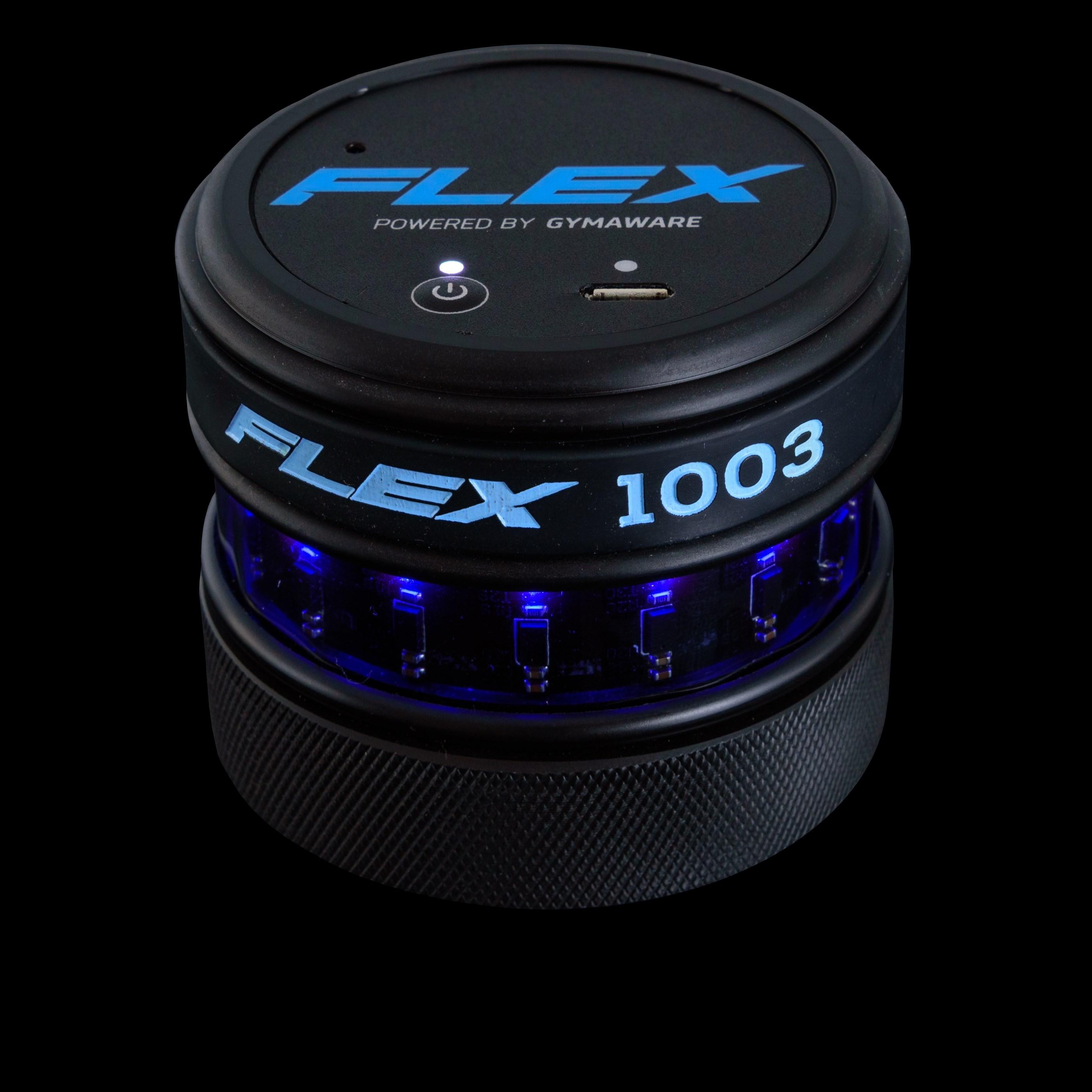
This month’s top research on technology and monitoring.
HOW MUCH SLEEP DOES AN ELITE ATHLETE ACTUALLY NEED?
MANAGING AND MITIGATING REPETITIVE HEAD IMPACTS IN COLLEGIATE FOOTBALL

OBJECTIVE
Sleep is a critical recovery tool that supports an athlete’s psychophysiological response to training and competition. Adequate sleep has the potential to optimise performance and support adaptation to training stimulus. espite the well understood performance benefits of adequate sleep, elite athletes continue to fall short of the recommended 7-9 hours (see HERE).
This study assessed how sleep duration among elite athletes from various sports differed from their subjectively reported sleep needs. Commonalities and differences in sleep habits (onset, wake time, etc.) were explored between individuals, sexes and sports.
A group of 175 elite athletes (145 male, age = 22.4 ± 3.7 years; 30 female, age = 21.1 ± 4.5 years) across 12 different sports (e.g. basketball, cricket, kayaking, rugby union, soccer, triathlon, etc.) had their sleep habits monitored for at least four nights during an off season training period.
An initial sleep questionnaire identified each athlete’s subjective sleep need, satisfaction, and quality. Sleep was quantified using wrist activity monitors, paired with the athlete’s journaling of sleep onset and wake time each morning.
Sleep deficit was calculated as the difference between reported sleep need and actual sleep duration. The objective and subjective reports were analysed to better understand the sleep habits of elite athletes, as well as any differences between sport and sex.


Screening athletes for self-reported overall sleep quality and sleep satisfaction using a Likert scale can help identify those in need of support and intervention.
For athletes in need, helping them to develop a nightly relaxation routine that encourages a consistently early sleep onset (e.g. setting a realistic goal of being in bed by 10:00pm, limiting screen time in the hour prior), maximising sleep quality (e.g. setting the room to a cool temperature, completely dark, playing calming sounds, sleep mask, or investing in quality bedding )(see HERE), and delaying waking until necessary.
Coaches can further support an athlete’s sleep hygiene by organising training to allow for maximal sleep. For example:
Limiting unnecessary early morning or late evening training sessions that would interfere with a typical sleep schedule.
Allowing for extended sleep the morning following a late evening competition.
Placing the onus on the athlete and obtaining a subjective report of sleep needs can be a strategy to help build accountability and support performance.
Monitoring sleep using an activity monitor provides valid, objective data of an athlete’s actual sleep duration (see HERE).
Simultaneously monitoring a performance metric (e.g. sprint speed, jump height, or predicted one-repetition maximum strength) for comparison against extended sleep can boost an athlete’s commitment to sleep hygiene.
Alternatively, tracking self-reported mood or motivation can help identify positive relationships with productive sleep.

Using the sleep deficit score (i.e. actual sleep duration minus sleep need) is a potential strategy to highlight an athlete’s ability to manage time. It may take time depending on how large the deficit, but a deficit of zero is the eventual goal.
Want to learn more?
Then check these out...
In order to feel rested, the athletes reported needing an average of 8.3 hours of sleep, but only obtained an average of 6.7 hours.
Only 3% of athletes achieved adequate sleep relative to their reported need.
71% of athletes had a sleep deficit of at least one hour.
Athletes that slept the most either fell asleep between 10:00-10:30pm or woke up between 9:00-9:30am.
On average:
Team-sport athletes slept more than individual sport athletes.
Female athletes went to sleep earlier than male athletes.

"In order to make training more productive and maximise performance ability, it is a coach’s responsibility to help athletes take full advantage of the benefits of sleep. Much as it is with training, specific and individualised sleep strategies can be more effective than general recommendations. It is not the act of sleep itself that is the challenge to overcome, but appropriately managing the schedule and environment to allow an athlete to experience optimal sleep.
"Identifying athletes who are deficient in sleep is a critical first step, followed by the education of sleep-associated performance (improved reaction time, decision-making, cardiovascular function and decreased time to fatigue) and psychological (improved mood, motivation, and perception of effort) benefits (see HERE). Education then requires further follow-up through consistent sleep screening, monitoring, and performance testing to highlight improvements.

"It is also important to support any lifestyle changes that an athlete may make to improve their performance and wellbeing."

The full-contact nature of American football exposes athletes to repetitive head impacts (RHI), primarily as a result of player collisions and subsequent rapid brain movement against the skull. These RHI are inherent to the sport and fluctuate based on circumstance (e.g. player position, football activity type, style of play) and intensity, but their effects on athlete health and brain function are unclear. Pressure sensors worn inside an athlete’s helmet have allowed a better understanding of the volume and intensity of head impacts during play.
This research examined the effect of RHI experienced during various American football practice activities on reaction time, balance, cognition, and concussion-like symptoms, both initially (one to seven days post occurrence) and across an entire season (pre- to postseason).
Twenty NCAA Division 1 football players from the same team playing in 10 different positions had pressure sensors inserted into their helmets to assess RHI for an entire season. Impacts above 20g were recorded during on field training and competition games, and categorised as either ‘high’ (>63g) or ‘low’ (20-63g) force hits. Baseline measures for reaction time, balance and cognition were collected, as well as concussion history prior to the season.
Five nights each week, players completed a concussion symptom checklist (see HERE), and following each practice session or competition game, reaction time and balance were reassessed. At the end of the season, reaction time, balance and cognition measures were collected for comparison against baseline values.
Data were analysed based on playing position, and relationships between RHI exposure and collected variables were explored.

When coaches are designing practice plans and drills, technical and tactical development should be the focus. Consider the question: Does this drill help improve player or team performance without putting the athlete at risk for unnecessary RHI? Depending on the level and experience of a given athlete, full speed and contact drills may not be necessary.
Coaches can help to reduce the volume and intensity of RHI experienced in competition by addressing playing techniques (e.g. blocking and tackling). It is important to teach athletes to not lead with or become reliant on their helmet when colliding with opposing players (see HERE).
RHI intensity can be minimised during practice by:



Limiting the amount of equipment that athletes wear (e.g. only wearing helmets and shoulder pads)
Controlling the speed at which drills are performed, encouraging halfspeed where applicable (e.g. learning plays).
Restricting athletes from tackling completely to the ground.
Especially in season, minimise or eliminate drills and styles of play that
involve the highest rate of RHI (rushing or play action plays) and carry the greatest risk for high force RHI (e.g. 11 v 11 play).
Coaches must appreciate the positions that have the highest exposure to RHI (e.g. defensive ends, linebackers, tight ends) and minimise the volume of contacts these players experience during practice.
It is important for coaching and medical staff to collaborate in performing tests related to cognition and monitoring concussion-like symptoms regularly (weekly and annually). Establish baseline values before the season and identify any significant changes that would alert the need to limit any type of RHI in training or competition.
By reinforcing the importance of their health, well-being, and career longevity, coaches can ensure athletes feel comfortable reporting concussion-like symptoms and trust that the information will be used appropriately.
Want to learn more?
Then check these out...
The tight end position had the most overall impacts (477.5 low, 25.5 high), closely followed by defensive ends (368.5 low, 23.5 high). Conversely, the safety position had the lowest number of impacts (66.5 low, 2.5 high).
Practice drills that emphasised rushing the ball had the greatest rate of RHI.
Increased head impacts across the season correlated with slower reaction times.
Balance measures saw an acute (within the week) decrease with increased RHI, but overall did not decrease across the season.
There was no decline in cognition measures across the season.
Concussion-like symptoms increased with RHI, most notably, fatigue, increased sleep, headaches, and difficulty remembering or concentrating.
"The results of this study bring to attention a growing area of concern related to the management of RHI in collision sport athletes. RHI are inevitable, but the importance of controlling and mitigating risk factors is crucial for athlete health and career longevity. The notable increase in concussion-like symptoms and decrease in reaction time noted in this study further reinforce the short-term cost of a single season in American football. It’s plausible to believe that these symptoms and changes to brain function happen so gradually across multiple seasons that they may not be as apparent as we’d expect.

"There is a call for coaches to teach athletes appropriate ways to use their bodies in collisions and be actively involved with medical teams to properly manage RHI exposure. This includes collaboration to identify signs and symptoms of head trauma, as well as managing the accumulated volume and intensity of RHI during practice. Performance is important, but an athlete’s health should take precedence, especially in younger players."

This month’s top research on fatigue and recovery.

Change of direction intensity during basketball and its influence on fatigue
Compression socks during exercise: yes or no?

OBJECTIVE
Basketball is a team sport largely characterised by repeated accelerations, decelerations and changes in direction (see HERE). These high-intensity movements often lead to increased levels of muscle damage as they involve eccentric and quasi-isometric muscle contractions (see HERE). Subjective measures such as RPE are often used as a representation of an athlete's perceived physical condition after competitive matches. However, the relationship between these and the objectively measured volume of highintensity movements is unclear in a basketball setting.
Therefore, this study aimed to evaluate the effect of high-acceleration movements on muscle damage and the rating of perceived exertion (RPE) in basketball games.
TwentyHone male collegiate basketball players (20.0 ± 1.0 years) completed a single basketball match whilst wearing triaxial accelerometers (Catapult OptimEye S5) to quantify physical load. The number of accelerations performed in each axis (x = anteroposterior, y = mediolateral, z = vertical) were collected, with the resultant acceleration (√ [x2 + y2 + z2]) calculated and grouped by intensity thresholds of >4G, >6G and >8G
As an indirect marker of muscle damage, plasma creatine kinase (CK) was collected one hour before and 24 hours after the match through finger prick blood draw. Additionally, Session-RPE (RPE multiplied by session duration) was collected 30 minutes after the match to subjectively quantify workloads.


We know that CK in the blood is often used as an indirect indicator of muscle damage. Therefore, the present study’s findings highlight the severity of increasing intensity during acceleration movements on subsequent muscular fatigue and damage. This may be useful for practitioners when tailoring specific post-match recovery interventions or providing subsequent training recommendations for athletes. For instance, the informed decision of extending an athlete’s recovery by an extra day may be feasible after instances of extreme volumes of high-intensity accelerations.
Considering only the number of accelerations >4G were correlated with the athletes’ perceived effort (RPE), practitioners are reminded to be mindful of solely observing high-intensity loads. These findings are a reminder to the reader that volume and intensity-based variables are both exclusive from each other, and both should be considered when looking to better understand the overall impact of match fixtures on an athlete’s wellbeing.
Given that increased acceleration intensity did not positively correlate with increased session-RPE, it seems as though these markers are not interchangeable when explaining post-match fatigue in basketball. Both objective and subjective measures are widely used in sports science, and findings herein justify this as they do not always follow the same trends. Therefore, it may be advised that basketball practitioners seek to monitor both acceleration and session-RPE when monitoring the load of athletes after matches.
Want to learn more?
Then check these out...
Match-related findings
The average total playing time was 24.5-min and the average session-RPE load was 124.0
Plasma CK levels were higher post-match (215 U/L) when compared to pre-match (141 U/L).
The number of acceleration movements >4G, >6G and >8G were 1172, 265 and 66, respectively.

Correlation findings
A greater number of high-acceleration movements (>8G) correlated with higher CK levels post-match (r = 0.74).
An increase in CK concentration post-match was associated with a greater number of accelerations at increased intensity thresholds (>4G: r = 0.65; <6G; r = 0.69 <8G: r = 0.74).
The correlation between accelerations and session-RPE load decreased with greater acceleration thresholds (>4G: r = 0.72; <6G: r = 0.52; <8G: r = 0.43).
- RPE alone was correlated with the number of acceleration movements >4G only

"This study provides a relatively basic but useful evaluation of match load in basketball and its impact upon subsequent fatigue and recovery. Considering the high prevalence of acceleration and deceleration demands of the sport and short turnaround times between matches, investigating ways of better understanding the recovery process is highly valuable. Therefore, continued research should further explore the match demands of basketball on all aspects of physical, psychological and perceptual recovery and well-being.


In my experience, the relationships between physical parameters (e.g. accelerations) obtained during a match and post-match measures of physiological fatigue (e.g. CK) aren’t always linear. For example, several movements, actions and skills that occur within competitive sport (e.g. kicking, tackling, wrestling) induce substantial physical impact and energy cost on the body without being detected by accelerometers and GPS systems. Therefore, readers should not look to assume that the relationships found within this study are totally applicable and interchangeable for all sports settings, and that low acceleration counts will not always equal low muscle damage. This may also somewhat explain the opposing relationships between accelerations and session-RPE.
As well as the perceptual and biochemical indicators presented in this study, the big picture of recovery requires attention to several other factors. In my experience, it is important to consider each athlete on an individual level and understand the situational factors that may influence the subsequent recovery requirements. For example, each individual may cope with muscle soreness differently, so the time it takes to recover may differ considerably. Furthermore, fixture schedules and player availability for subsequent matches may also influence decisions on recovery strategies. Therefore, in my opinion, it is imperative that as practitioners we use this information appropriately and maintain a close eye on the bigger picture.
OBJECTIVE
Competitive soccer matches induce substantial fatigue, and as the time between congested fixtures is generally insufficient for a full recovery (see HERE), strategies to minimise this fatigue are of particular interest to players and coaches alike (see HERE).
Compression stockings (CS) improve venous return, prevent deep venous thrombosis, and are used among athletes to minimise muscle damage and soreness after competition (see HERE). However, evidence to confirm their usefulness during competition games is scarce.
Therefore, this study aimed to evaluate the acute effects of CS on physical and perceptual responses during a soccer match.
Twenty outfield players were allocated to either an experimental group using compression stockings (CS, age = 18.4 ± 0.5) or control group using regular socks (age = 18.3 ± 0.5) and played two matches, the first on a Tuesday and the second on the following Friday. Five players from each playing team were allocated to the CS group (n = 10) and five to the control group (n = 10). The stockings used in the CS group were ¾ length closed toe, and had a compression of 20 to 30 mm Hg. The CS group wore the garments from 20-min before the warm-up to 10-min after the match.
The following subjective variables were obtained from each player:
Perceived expectation of CS effects
- Comfort (0 = very uncomfortable to 10 = very comfortable)
- Tightness (0 = very slack to 10 = very tight)
- Pain (0 = no pain to 10 = very painful)
- Rating of perceived exertion (RPE) (see HERE)
- Internal load (RPE x minutes played)


- Muscle soreness (0 = normal absence of soreness to 10 = very intense soreness)
- Perceived recovery (0 = poorly recovered to 10 = very well recovered)
The following physical indicators were obtained from each player using a HR monitor and global positioning system (GPS) device with built-in accelerometer:
- Mean and peak heart rate (bpm)
- Distance covered in speed zones one to five (1 = 0 to 11.09 km·h−1, 2 = 11.10 to 14.09 km·h−1, 3 = 14.10 to 19.09 4 = km·h−19.10 to 22.99km·h−1 and 5 = > =23 km·h−1)

- Number of accelerations in four zones (low = 0.50 to 0.99 m·s-2, moderate = 1.00 to 1.99 m·s-2, high = 2.00 to 2.99 m·s-2, maximum = > 3.00 m·s-2)
- Number of decelerations in four zones (low = -0.99 to -0.50 m·s-2, moderate = -1.99 to -1.00 m·s-2, high = -2.99 to -2.00 m·s-2, maximum = < -3.00 m·s-2)

Considering soccer teams are regularly competing twice and even sometimes three times per week, assisting the recovery process by any means possible is favourable. The results from this study showed that CS reduced the increment of muscle soreness, especially after the second match. Therefore, it may be recommended that coaches seek to employ such interventions with their athletes.

Findings from the present study express that the usage of CS may have assisted in improving physical performance variables (zone 4 and 5 distance and maximum decelerations) during the competitive matches. Although further research is needed, considering the possible appearance of a dual effect of reducing fatigue and enhancing physical performance, athletes may benefit from using such intervention techniques.
The positive effects found herein may equip athletes with enhanced performance of high-intensity movements in subsequent matches as a result of improved perceptual and physiological recovery. Such improvements may provide athletes with an edge in modern-day soccer, especially considering the high prevalence of fixture congestion in the sport at the professional level (see HERE).
Want to learn more?
Then check these out...
The expectation of effect on performance when using CS was varied, with four participants expecting no effect, two expecting a negative effect, and four expecting a positive effect. Overall, comfort scores ranged between 6.7 and 7.2, tightness ranged between 6.7 and 7.0 and pain scores ranged between 1.1 and 1.6 arbitrary units.
Perceived recovery was poorer in match two compared with match one for both groups (control = 7.6 vs. CS = 6.0). The CS group reported less muscle soreness than the control group after match two compared with match one.
Internal load
Mean and peak HR, RPE and internal load did not differ between groups
External load
Distance covered in zones 1, 2 and 3 did not differ between groups
Distance covered in zones 4 and 5 were higher in match one for CS compared to control
Distance covered in zone 4 was also higher in match two for CS compared to control
Maximum decelerations were higher in match one for CS compared to control
"Within the present study, inclusion of a placebo was difficult due to the nature of the physical sensation of CS on the lower-limbs and inability to mask this. Therefore, although the preconceived perception of the effects of CS within the CS group was mixed, such understanding may have somewhat impacted upon both subjective and objective findings of the study.
"Secondly, considering the multifactorial nature of recovery in competitive sport, there is every possibility that other factors (e.g. diet, sleep, muscle fibre type) may have impacted upon the time course and appearance of recovery between groups and individuals.
"Finally, from personal experience, the acceptance of compression garments within elite sport is somewhat varied and individual-specific. Wearing tight clothing post-competition is sometimes the last thing athletes want to do due to a perceived lack of comfort. Therefore, these sensations of discomfort could potentially occur within competition and may be increasingly distracting from the bigger picture - performing within the sport. As practitioners, we should realise this when recommending such interventions to our athletes."

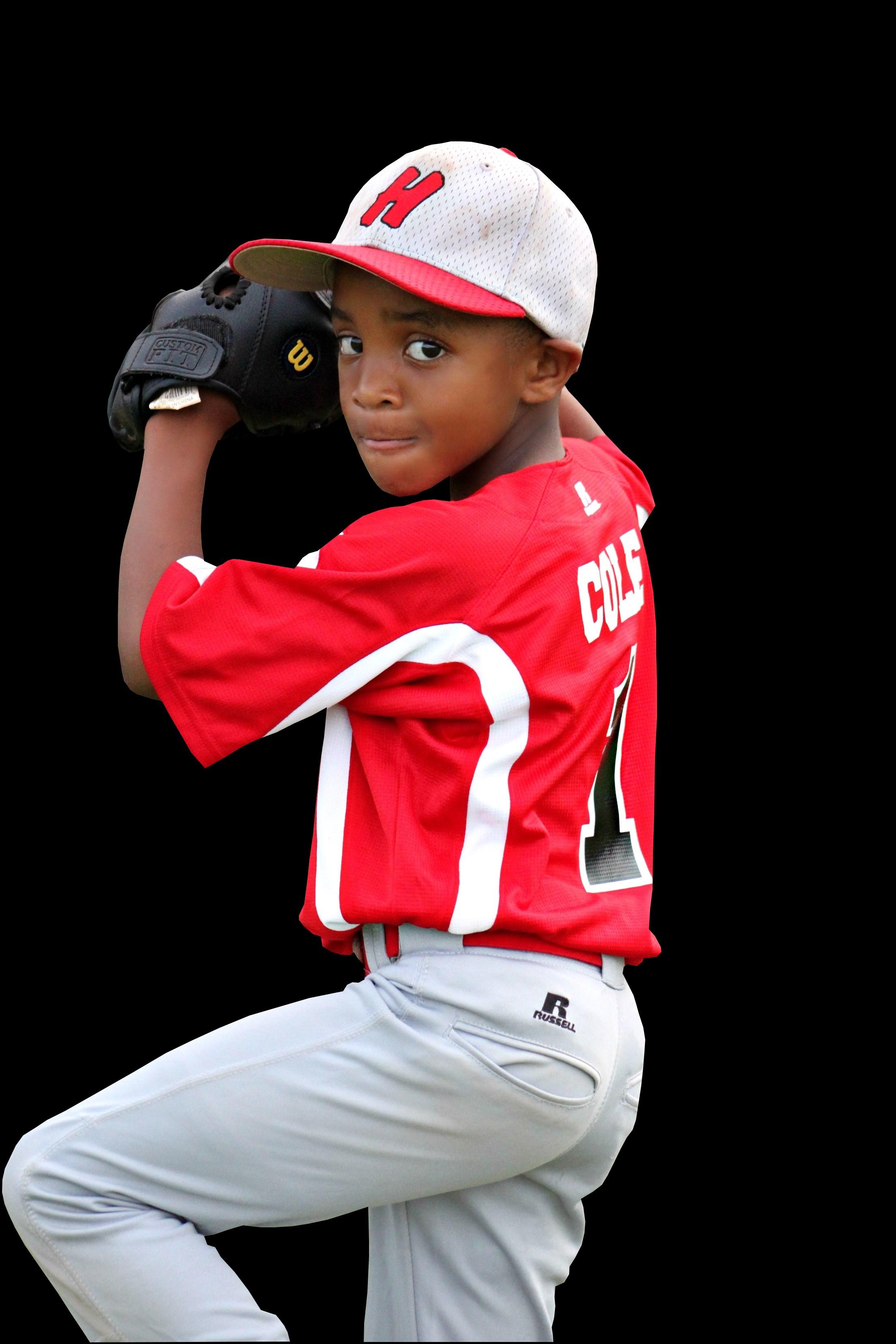
This month’s top research on youth development. An examination of loading profiles for youth athletes performing the hang power clean

The ability to produce force in the shortest amount of time is essential in sport skills such as jumping, cutting, and running. For youth athletes to develop this ability, Olympic weightlifting and its derivatives are suggested to be effective methods of achieving appropriate force-velocity characteristics (HERE). More specifically, the hang power clean has been suggested as a good alternative to the full clean, due to its ease of teaching and similar force outputs during lower limb triple extension (HERE).
Despite these well-known concepts, few studies have investigated the role of various hang power clean loads on power and velocity outputs in youth. Therefore, this study aimed to explore the role of load on force-velocity characteristics in youth athletes performing the hang power clean.
Sixteen male youth athletes (age = 16.94 ± 0.97 years) participated in this study. All athletes were injuryHfree, actively participating in a strength and conditioning program, and engaged in at least one powerHbased sport during the school year.
Testing occurred over three sessions, separated by 48 hours of recovery. In testing session one, participants performed a dynamic warm-up, followed by two sets of five repetitions of the hang power clean at approximately 50% of their estimated one-repetition max (1RM). In testing session two, athletes performed three repetitions at 30 60, and 90 percent of their 1RM. In testing session three, loads of 50, 70, and 80 percent were used.
A TENDO linear position transducer was used to evaluate peak and mean power, velocity, force, and rate of force development across all loads.
Traditionally, coaches have used a percentage of 1RM to train certain strength qualities. For example, in the article HERE, strengthHspeed is suggested to be developed at loads around 80 percent of 1RM. However, the attached article suggests that an individual’s 1RM can fluctuate by about 18 percent on a daily basis depending on a host of factors (e.g. fatigue). As coaches, we know the importance of accurately prescribing loads, as excessive work can lead to excess fatigue and overtraining. Therefore, velocitybased training, made possible by tools such as the PUSH band or GymAware can be useful. The benefits of velocity-based training are:
1.It offers immediate, objective feedback to monitor session intent




2.It promotes an aspect of intra- and interindividual competition within sessions
3.It allows progress to be collected and tracked alongside session RPE data to monitor fatigue.
This study confirms that when training youth athletes, force characteristics are developed at loads around 70 and 90 percent of 1RM. Training at these percentages will develop maximal strength, which in turn contributes to improved velocity characteristics in youth (HERE). Exercises that lend themselves to these loads in youth are squat variations (e.g. front or trap bar) and deadlifts.
When looking to develop velocity characteristics, the safest and most effective way to acutely improve velocity is through medicine ball throws (see video) and plyometric work. Throws, tosses and heaves are really enjoyable, and making these competitive for children (e.g. distance or height competitions) always drives performance. However, these should only occur when optimal technique can be maintained and the positions can be held statically and dynamically. A basic guide for this can be seen HERE.
Want to learn more?
Then check these out...
There was a significant effect on the peak and average velocity and force at all load conditions. More specifically, the findings suggest that peak power was greatest at 70 percent of 1RM, which was significantly higher than training at 30-50 percent of 1RM.
Average power was maximised at a training load of 90 percent of 1RM, which was significantly greater than 30-60 percent but not 70 percent of 1RM.
Conversely, barbell velocity was maximised at loads set at 30-40 percent of 1RM, while rate of force development was maximised at 90 percent, indicating a need for individual programming.

"Improving an athlete s ability to produce force explosively is important, as their opportunities to beat their opponent in sport (e.g. sprint to a ball faster) and inevitably ‘succeed’ improves. Maximising rates of force development requires an optimal interplay between velocity and force production. To increase an athlete’s rate of force development, athletes can train on the forceHvelocity continuum (HERE), where training at varied loads on the forceHvelocity spectrum can be advantageous when looking to develop certain qualities. For example, loads

<30 percent develop velocity characteristics, as they are generally lighter and easier to move. Loads between 90-100 percent of a one repetition max will move slower, as these are heavier and require more strength.
"Generally, weaker athletes can develop force and velocity characteristics through strength training alone, as muscles become more efficient at recruiting motor units (HERE). As a result, voluntary muscle control is enhanced, allowing an individual to apply greater levels of force and control to a given task. Once movement patterns are stable and robust, increasing the speed of movement can be a valid way to progressively overload an athlete. Again, this is where a good S&C coach with experience is worth their weight in gold. In the attached podcast, expert youth S&C coach Paudie Roche of Arsenal FC discusses the careful interplay between force and velocity requirements. He goes on to suggest that athletes must earn the right to progress, by demonstrating maturity in the training process and understanding the technical requirements for the exercises prescribed by Arsenal FC."

This month’s top research on nutrition.
Do soy isoflavones improve time trial cycling performance?
Can caffeine help reduce the effects of muscle damage and soreness on performance?

Soy isoflavones (a form of natural plant oestrogen) have previously been investigated for their role in health promotion and reducing blood pressure. They have also been found to relax blood vessels (i.e. vasodilate) in postmenopausal women via Nitric Oxide (NO) signaling and resultant mechanistic effects.
Nitrate, which is then converted to NO in the body, is well known as a sports supplement due to its potential to reduce the oxygen cost of exercise. For example, commonly consumed supplements by athletes include beetroot juice and rhubarb nitrates. Nitrate also relaxes the blood vessels and allows more blood, and therefore oxygen, to be transported to the working muscles during physical activity. This has a positive effect on endurance performance, as described in this video.
With this in mind, the authors of this research investigated if acute fermented soy extract supplementation could improve 20km time trial performance in trained male cyclists.
Secondarily, the cardiovascular influence of this supplementation was investigated by quantifying variables of cardiac hemodynamics.
In total, 25 recreational male cyclists and triathletes participated in the study. As a baseline measure, all participants completed a VO2peak assessment on a cycle ergometer. The cycling started at 100 watts (W) and increased by 50W every two minutes until 250W was achieved, after which the intensity increased by 30W every two minutes until volitional exhaustion.
Of the 25 subjects, 14 were classed as moderate fitness (VO2peak 48.9 ± 3.9 mL.kg-1.min-1) and 11 were classed as high fitness (VO2peak 63.1 ± 4.9 mL.kg-1.min-1).
Subjects then took either a placebo (30g organic cocoa powder in 16 fluid ounces water, macronutrient composition; CHO 15g, PRO 5g, FAT 2.5g) or a fermented soy supplement, Fermalife, with the same quantities of powder and water (CHO 6g, PRO 9g, FAT 4.5g). Participants were asked to rest for 60 minutes to allow them to digest the drink, then after a 30 minute warmup at 55% WPeak and a five minute pause, they completed a 20km time trial. After 48 hours the test was repeated, following a cross-over design.
Physioflow electrodes on the neck and chest measured cardiac output, stroke volume and heart rate (HR). The cycle ergometer software continuously measured power output in Watts (W), pedalling cadence, speed and the time taken to complete the 20km time trial.
cycling exercise and again immediately after the 15-minute exercise performance test.



Although acute supplementation with 30g fermented soy supplement oneHhour before exercise improves 20km cycling time trial performance, it should be recognised that this improvement was only just significant (P=0.040). With this in mind, practitioners
may consider using other supplements which have more extensive research and evidence for performance improvements (i.e., nitrates) which can be seen here

Importantly, soy isoflavones are known to lower blood pressure. Considering athletes habitually often have lower resting heart rates and blood pressures, care should be taken with supplementation on a regular, or ongoing basis and should be discussed with the athlete's medical support personnel.
The effects shown in this study were only on men. The changes to NO signalling cascades are thought to rely on estrogen receptors in the blood vessels. As such, is it not known whether the effect would be the same in women, and whether that effect would change throughout the menstrual cycle relative to fluctuating levels of endogenous estrogen.
Finally, if athletes do want to naturally increase their intake of soy protein, they can do so by increasing consumption of foods within the diet (i.e., tofu, soy beans, edamame, soy nuts and soy milk).
Want to learn more?
Then check these out...
Within the 30-minute warm up, cyclists in both moderate and high fitness groups had significantly lower HR after consuming the supplement compared to placebo (-4 ± 7 bpm). Cardiac output and stroke volume were similar.
After taking the soy supplement (35.31 min), the average time to completion of the time trial was 0.22 minutes, or 13 seconds faster than placebo (35.53 min). Additionally, average power output increased by 4W (4±7), despite an average HR of 5bpm lower than placebo (5 ±7). Power output and speed differences were significantly different at the 20km marker, but not at 15, 10 or 5 kms.
While the moderate fitness group did perform better with the soy supplement, this was not statistically significant in any performance measure. Meanwhile, the high fitness group showed a proportionally larger improvement which did reach statistical significance, namely; 0.24 ± 0.35 minutes(14 seconds) faster than placebo, with an average power output 5W ± 6W higher, and a corresponding increase in speed of approximately 0.26km.h-1.


"The really interesting aspect of these results is that the fermented soy supplement had a greater effect on the better trained subjects. Previous research, summarised in this article, has demonstrated that NO supplementation may become less effective, the fitter, or better trained, the athlete. Since the soy isoflavones are purported to affect the NO signaling cascades more than the actual levels of NO within the blood, it would be very interesting to see whether the two supplements together could have a synergistic effect, particularly for well trained athletes.
"Although that aspect is particularly interesting, it should also be noted that the apparently different relative responses of the moderate versus high fitness groups could be due to the relative experience of each group in time trial racing. The fitter athletes would likely have more experience, thus knowing when to conserve energy and when to push harder. That could make them capable of executing a better performance than the relatively lesser experienced moderate fitness group, especially in the final parts of the race. Further studies would be needed to confirm whether it really was the soy supplement that made the difference or purely the fact the fitter cyclists were better at pacing the time trial.
"Even though the specific supplement used here was a fermented soy product, soy isoflavones, in general, have been demonstrated to contribute to lowering blood pressure, which may translate in a similar way to exercise. These soy isoflavones are also classed as phytoestrogens, which has created some worry as to whether they will cause estrogenic effects when they are consumed. This podcast sheds some light on why that is not the case and defines the role of soy in an overall healthful diet."
OBJECTIVE
Delayed Onset of Muscle Soreness (DOMS) is a symptom of Exercise-Induced Muscle Damage (EIMD) that athletes of all levels are familiar with. DOMS is most commonly present following high-intensity exercise and/or repeated eccentric muscle contractions, and has been associated with decreased strength and explosive power output, and decreased performance over several days of competition.
One mechanism that partly explains this decrease in muscle functionality is a decrease in calcium (Ca2+) release from the sarcoplasmic reticulum (due to repeated and frequent muscle contractions). This, in turn, decreases the efficiency of the muscle fibre contraction, as explained in this video. Caffeine has been shown to improve muscle strength and explosive power by several mechanisms, including increasing Ca2+ release from the sarcoplasmic reticulum, and increasing the sensitivity of the muscle fibres to Ca2+. It also influences how we perceive pain, through interactions with a neurotransmitter called acetylcholine. All of these mechanisms are explained in more depth here.
At present, the literature is lacking with regard to understanding the effects of caffeine ingestion on DOMS. As such, the authors of this study aimed to investigate the overall and sex-specific effects of caffeine on muscle anaerobic performance, DOMS and circulating biomarkers following EIMD.

Twenty elite college athletes (10 male, 10 female, age = 20.4 ± 1.2) competing in tennis, basketball and football were included in the study. All females had normal menstrual cycles and all participants had a regular caffeine intake of less than 200mg (the equivalent of approximately four standard espressos) per week. Participants were divided into two groups: five males and five females received a caffeine supplement of 6 mgJkg, whilst the remaining five males and five females were given a placebo. Both were mixed with 500 mls of water.
On day one, participants completed baseline testing in the form of a muscle performance test (MPT) of the dominant knee extensor/flexor on an isokinetic dynamometer, a venous blood sample, and a VO2max running test on a treadmill.
On day two at 08:00, participants completed a 30 minute downhill (gradient 15%) run on a treadmill at 70% VO2max to enforce skeletal muscle EIMD.
On day three and approximately 24 hours after the run, participants provided their first blood sample (fasted) and were given a standardised breakfast (353 kcal; carbohydrate 67.6%, fat 23.1%, and protein 9.3%) afterwards. Following a 30-minute rest period after breakfast, the same MPT that was completed on day one was repeated, and the mean peak power of the three Maximal Voluntary Isometric Contractions (MVIC) performed was used as the value for each participant's MVIC. Participants then performed a submaximal voluntary isometric contraction at 50%, until power output at 45% could no longer be maintained for more than three seconds. The MVIC was repeated, and referred to as MVICPost to give a measure of performance after fatigue. At the cessation of the MPT, a second blood sample was collected and then participants consumed either the caffeine or placebo beverage prior to a third blood sample being collected. The MPT was then repeated one hour later and was followed by a final blood sample collection. Blood samples were used to measure potassium (K+), lactate, glucose and Creatine Kinase (CK). Subjective scores of DOMS from 0 (no pain at all) to 100 (extreme soreness) were collected after each MPT.
The protocol was then repeated following a cross-over design 48 hours after the downhill run.



Consumption of 6 mgJkg caffeine is effective in helping to improve performance whilst experiencing high levels of DOMS. Therefore, in sports where athletes are likely to experience DOMS during competition (i.e., football and rugby), caffeine can be used as a way to reduce these feelings of soreness and support improved performances.
Although the results show positive effects in male participants, there were also improvements in females, and as such, caffeine use may be warranted in both sexes. Anecdotally, I have seen and been told of the improvements in female athletes who have started to use caffeine both before and during team sport match play.
Although muscle soreness decreased less in females than males following caffeine supplementation, overall performance between both sexes did not differ. Therefore, it can be suggested that pain perception is not the only factor at play when considering DOMS-associated declines in performance, however this warrants further research.

I would always suggest practicing caffeine strategies during training and warm-up games prior to actual competitive fixtures or important competitions. This will allow you to work with your athletes to refine the best source of caffeine (i.e., gum, gel, shot) and the appropriate total amounts required.
Want to learn more?
Then check these out...
The caffeine groups performed 10% better in the MVIC test following the downhill run compared to the placebo group, and 7% better in MVICPost. However, there was no difference between sexes.
Male participants who were supplemented with caffeine showed a decrease in DOMS by 22%. This was proportionally better than the females, whose score was only reduced by 5%. Both were significantly different from their respective placebo groups. Overall, DOMS scores were 87 ± 7 AU after placebo and 75 ± 13 AU following the caffeine supplement.

Levels of circulating glucose and lactate were higher in the caffeine groups than placebo groups (4.5 ± 0.6 nmol/L vs 4.0 ٤0.4 nmol/L and 4.6 ± 2.0 nmol/L vs 3.6 ± 1.6 nmol/L respectively).
""Caffeine is well known to be a performance enhancer through several different routes, and the responses to the doses provided here certainly fit with the wider literature on the subject.
The effects of caffeine ingestion are, broadly speaking, the same no matter how it is taken. I know some athletes who prefer to have a coffee or two, while others prefer tablets or even chewing gum. The advantage of tablets or gum is that we can be sure of the dosage, while with coffee, it can vary by over 100% depending on the beans and how it was brewed, amongst other factors. Additionally, the time it takes for gum to elicit its effects versus a coffee is a lot quicker. Hence, the importance of refining your ideal intake strategy. There is a great deal of individuality when it comes to how caffeine affects each person, so best practise would be to try out different dosages to find what works best. However, it is worth noting that doses above 6 mg/kg are not necessarily more effective but may, in fact, lead to a higher incidence of unwanted side effects. More information on using caffeine as a part of a performance strategy can be found in this podcast episode."




The next issue will be published on the 1st of next month.
Did you like all the great content in this issue?
If so, then make sure you spread the knowledge with your friends and colleagues!

